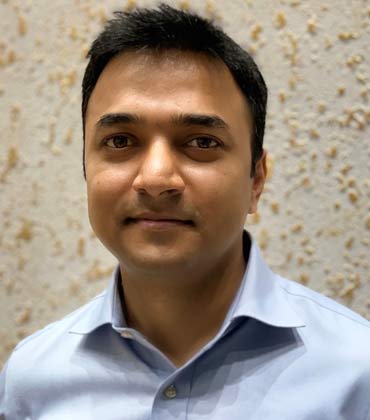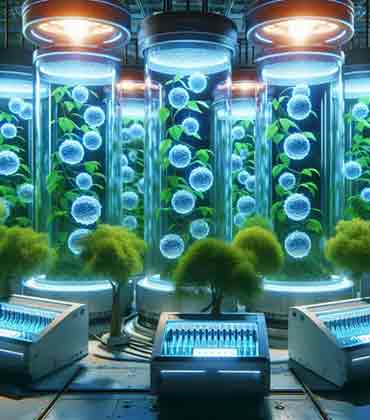THANK YOU FOR SUBSCRIBING
By Kshitij Godbole, Vice President Quality & Regulatory Affairs at Suntory Beverage & Food Asia Pacific
Human Aspects in Root Cause Analysis that Technology...
By Ken Bott, Head of Digital, PDQ (People Dedicated to Quality) Restaurants
The Tech-Enabled Paradigm Shift in eCommerce Landscape
By Arun Ahuja, Senior Vice President & General Manager, Healthcare & Corporate at Transact + CBORD
The Path of Least Resistance: Connecting Hospital Food...

 Ruth Muller, RD&I Director, Frucor Suntory
Ruth Muller, RD&I Director, Frucor SuntoryHave you ever walked down the supermarket isle and seen a product you developed? Aproduct consumers want to buy… one that’s in their repertoire, and still there 10 years later. I love that feeling!
My background is personal care. I moved to Foods 10 years ago expecting to return, but I got here and realised I’d never go back! Why? Opportunities and passion. Food is life – we put it into our bodies – and there’s anemotional and societal connection, as well as functional. Food has the ability to give people little moments of joy - think about your first coffee of the day, or grandma’s pudding. Contributing to those moments of joy in people’s lives is a privilege and responsibility. Developing food and beverage products isn’t solving world peace – but it matters!
Consumers are faced with so much choice… and there is no magic bullet for innovation. No formula to make it work. So what are the “ingredients” that make innovation more likely to be loved and to deliver for your business?
Here are some pointers based my observations over the past 20 years:
1. Consumer must be at the heart
As product developers we can be fixated on what we think tastes good, or design a landing place for some clever technology. However, a “cool product” isn’t cool if no one wants to buy it! All too often we make assumptions about our consumers and what they would like based on our own filters. If we are representative of the design target, we may be right – but that’s often not the case.
We need all sorts of thinkers now if we want to keep up, and we need managers who can understand and facilitate an inclusive environment
We must actively raise our awareness and avoid biases when developing. How? Talk to consumers. Read what they read, immerse ourselves in their lives. Understand not just how they interact with your product; know their worlds, their hopes and dreams, their concerns, their consumption at the adjacencies. You need this to help make the creative leap.
2. Leadership and culture that supports innovation
It’s been said that “culture eats strategy for breakfast”. 3M used to be known as an innovative company. A change of leadership put focus on process, rigour and downsizing, and the innovation markers dropped away. I have seen creative teams with great ideas undermined when the culture does not allow for creativity. That might sound strange… why would any executive team or culture oppose creativity and innovative thinking?
I wonder if it’sabout conflicting priorities or values, things like short term payback requirements or the need for top down control vs empowerment through the ranks, or the security of the status quo. It’s important to decide who you are as a company and what you want to achieve, and then build a culture and values that genuinely support it.
3. All “innovation” is NOT created equal
What is innovation? It could be near inor far out,on the core or the fringes, radical or incremental. Sometimes a simple “fast follow” can generate more value to the business than breakthrough technology. It could be visible to consumers (a new product) or invisible (a new process that reengineers your cost structures).
I like to think of innovation as creating value out of ideas. I always start with asking what the business needs right now. I see success as in-year financial delivery and long-term share of market – and if an innovation can give both, GREAT!
Realise that not all innovation will work (e.g. a new brand in an emerging space), and balance that with safe bets (e.g. a new flavour in a clear consumer desirable partition) that you know your heavies will love.
4. Leverage connections, value your team
Don’t do it all yourself. Sometimes us technical people can place too much emphasis on our own knowledge or contribution. Once you know what you need, decide how you’ll deliver it. If there’s no benefit doing it yourself and it’s cost effective to outsource– do it! Use resources where there’s advantage. Leverage your connections (e.g. material suppliers, universities) to maximise your capacity. And use your team! Don’t think just because you are the boss, you’re always right and they’re wrong. Something my grads definitely know more than me about, is understanding GenZ’s! Be prepared to be disagreed with, or you’re hamstringing your own capacity and the quality of your outputs.
5. Value diversity
According to Daniel Pink in his book “A Whole New Mind”, we’re entering an age where conceptual thinking will be more valuable than ever.The outsourcing of knowledge work off-shore and to algorithms and robots, means skills like design, storytelling and building emotional connections to brands will play a key role in differentiation.
We need cognitive diversity - the value of left and right brain thinkers. In the past we may have put certain personality types into the “too hard basket”, over-emphasized “cultural fit” so as not to “rock the boat” and ended up hiring a lot of people who think the same. We need all sorts of thinkers now if we want to keep up, and we need managers who can understand and facilitate an inclusive environment.
So go on… make it your mission to create an environment where people can thrive and bring their best innovative and creative thinking to the table. And you just might give consumers something they will love, that will still be on the shelf 10 (or 50) years from now!
Read Also















